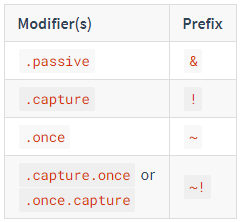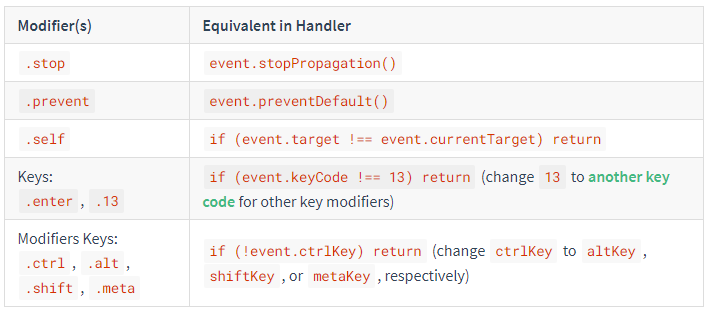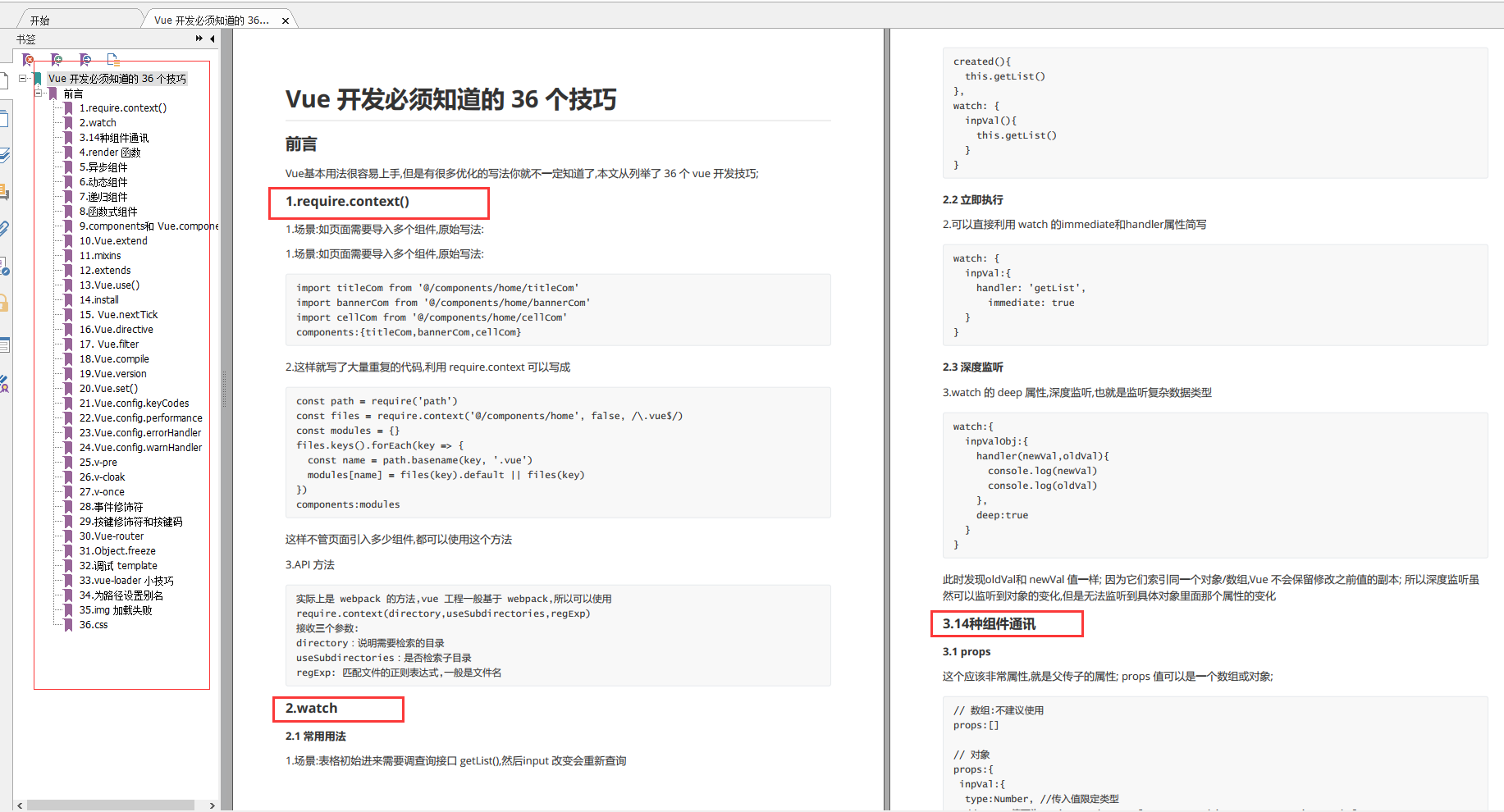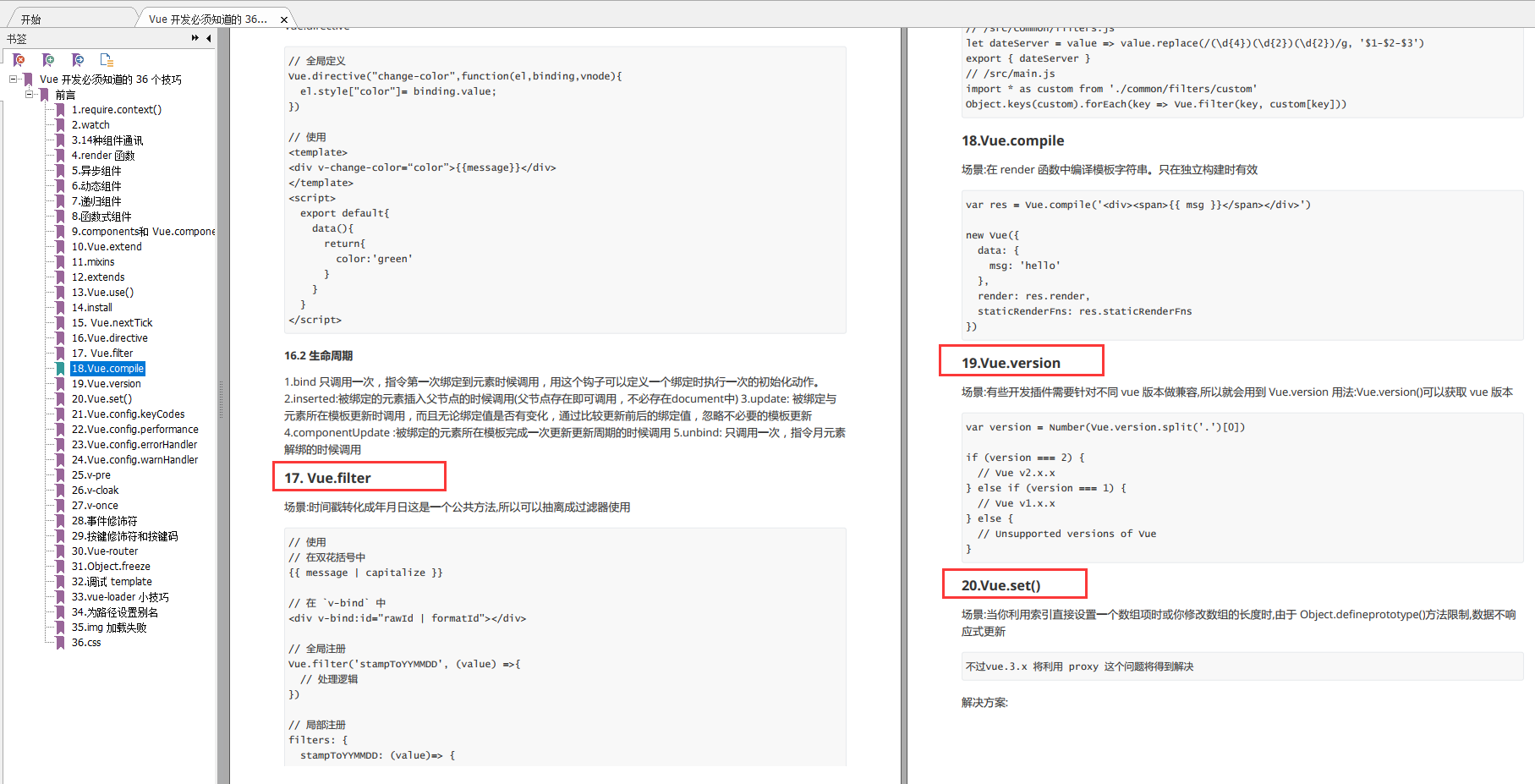7種Vue.js模式
1.處理加載狀態(tài)
在大型應用程序中����,我們可能需要將應用程序劃分為更小的塊���,只有在需要時才從服務器加載組件�����。為了使這一點更容易���,Vue允許你將你的組件定義為一個工廠函數(shù),它異步解析你的組件定義�����。Vue只有在需要渲染組件時才會觸發(fā)工廠函數(shù),并將緩存結果�����,以便將來重新渲染����。2.3版本的新功能是,異步組件工廠也可以返回一個如下格式的對象����。
const AsyncComponent = () => ({
// 要加載的組件(應為Promise)
component: import('./MyComponent.vue'),
// 異步組件正在加載時要使用的組件
loading: LoadingComponent,
// 加載失敗時使用的組件
error: ErrorComponent,
// 顯示加載組件之前的延遲。默認值:200ms��。
delay: 200,
// 如果提供并超過了超時�����,則會顯示error組件�����。默認值:無窮。
timeout: 3000
})
-
1
-
2
-
3
-
4
-
5
-
6
-
7
-
8
-
9
-
10
-
11
-
12
通過這種方法���,你有額外的加載和錯誤狀態(tài)���、組件獲取的延遲和超時等選項。
2.廉價的“v-once”靜態(tài)組件
在Vue中渲染純HTML元素的速度非?���??��,但有時你可能有一個包含大量靜態(tài)內(nèi)容的組件�����。在這種情況下����,你可以通過在根元素中添加 v-once 指令來確保它只被評估一次���,然后進行緩存�,就像這樣��。
Vue.component('terms-of-service', {
template: `
<div v-once>
<h1>Terms of Service</h1>
... a lot of static content ...
</div>
`
})
3.遞歸組件
組件可以在自己的模板中遞歸調(diào)用自己�,但是���,它們只能通過 name 選項來調(diào)用。
如果你不小心��,遞歸組件也可能導致無限循環(huán):
name: 'stack-overflow',
template: '<div><stack-overflow></stack-overflow></div>'
像上面這樣的組件會導致“超過最大堆棧大小”的錯誤�����,所以要確保遞歸調(diào)用是有條件的即(使用 v-if 最終將為 false)
4.內(nèi)聯(lián)模板
當特殊屬性 inline-template 存在于一個子組件上時��,該組件將使用它的內(nèi)部內(nèi)容作為它的模板����,而不是將其視為分布式內(nèi)容,這允許更靈活的模板編寫�。
<my-component inline-template>
<div>
<p>These are compiled as the component's own template.</p>
<p>Not parent's transclusion content.</p>
</div>
</my-component>
5.動態(tài)指令參數(shù)
指令參數(shù)可以是動態(tài)的。例如�,在 v-mydirective:[argument]=“value" 中, argument 可以根據(jù)組件實例中的數(shù)據(jù)屬性更新��!這使得我們的自定義指令可以靈活地在整個應用程序中使用����。
這是一條指令,其中可以根據(jù)組件實例更新動態(tài)參數(shù):
<div id="dynamicexample">
<h3>Scroll down inside this section ↓</h3>
<p v-pin:[direction]="200">I am pinned onto the page at 200px to the left.</p>
</div>
Vue.directive('pin', {
bind: function (el, binding, vnode) {
el.style.position = 'fixed'
var s = (binding.arg == 'left' ? 'left' : 'top')
el.style[s] = binding.value + 'px'
}
})
new Vue({
el: '#dynamicexample',
data: function () {
return {
direction: 'left'
}
}
})
-
1
-
2
-
3
-
4
-
5
-
6
-
7
-
8
-
9
-
10
-
11
-
12
-
13
-
14
-
15
-
16
-
17
-
18
-
19
-
20
6.事件和鍵修飾符
對于 .passive、.capture 和 .once 事件修飾符�����,Vue提供了可與 on 一起使用的前綴:

例如:
on: {
'!click': this.doThisInCapturingMode,
'~keyup': this.doThisOnce,
'~!mouseover': this.doThisOnceInCapturingMode
}
對于所有其他的事件和鍵修飾符���,不需要專有的前綴��,因為你可以在處理程序中使用事件方法���。

7.依賴注入(Provide/Inject)
有幾種方法可以讓兩個組件在 Vue 中進行通信�����,它們各有優(yōu)缺點�。在2.2版本中引入的一種新方法是使用Provide/Inject的依賴注入。
這對選項一起使用�����,允許一個祖先組件作為其所有子孫的依賴注入器��,無論組件層次結構有多深�����,只要它們在同一個父鏈上。如果你熟悉React�����,這與React的上下文功(context)能非常相似����。
// parent component providing 'foo'
var Provider = {
provide: {
foo: 'bar'
},
// ...
}
// child component injecting 'foo'
var Child = {
inject: ['foo'],
created () {
console.log(this.foo) // => "bar"
}
// ...
}
-
1
-
2
-
3
-
4
-
5
-
6
-
7
-
8
-
9
-
10
-
11
-
12
-
13
-
14
-
15
-
16
36個Vue開發(fā)技巧
1.require.context()
1.場景:如頁面需要導入多個組件,原始寫法:
importtitleComfrom'@/components/home/titleCom'
importbannerComfrom'@/components/home/bannerCom'
importcellComfrom'@/components/home/cellCom'
components:{titleCom,bannerCom,cellCom}
2.這樣就寫了大量重復的代碼,利用require.context可以寫成
constpath=require('path')
constfiles=require.context('@/components/home',false,/\.vue$/)
constmodules={}
files.keys().forEach(key=>{
constname=path.basename(key,'.vue')
modules[name]=files(key).default||files(key)
})
components:modules
這樣不管頁面引入多少組件,都可以使用這個方法
3.API方法
實際上是webpack的方法,vue工程一般基于webpack,所以可以使用require.context(directory,useSubdirectories,regExp)
接收三個參數(shù):directory:說明需要檢索的目錄useSubdirectories:是否檢索子目錄regExp:匹配文件的正則表達式,一般是文件名
2.watch
2.1常用用法
1.場景:表格初始進來需要調(diào)查詢接口getList(),然后input改變會重新查詢
created(){
this.getList()
},
watch:{
inpVal(){
this.getList()
}
}
2.2立即執(zhí)行
2.可以直接利用watch的immediate和handler屬性簡寫
watch:{
inpVal:{
handler:'getList',
immediate:true
}
}
2.3深度監(jiān)聽
3.watch的deep屬性,深度監(jiān)聽,也就是監(jiān)聽復雜數(shù)據(jù)類型
watch:{
inpValObj:{
handler(newVal,oldVal{
console.log(newVal)
console.log(oldVal)
},
deep:true
}
}
此時發(fā)現(xiàn)oldVal和newVal值一樣;因為它們索引同一個對象/數(shù)組,Vue不會保留修改之前值的副本;所以深度監(jiān)聽雖然可以監(jiān)聽到對象的變化,但是無法監(jiān)聽到具體對象里面那個屬性的變化
7種vue模式還能和大家說完,但36個vue開發(fā)技巧太多啦���,文章篇幅也不夠���,小編寫了兩個例子,沒寫出來的開發(fā)技巧小伙伴們請點擊這里領取Vue開發(fā)必須知道的36個技巧PDF文檔��。


轉自:csdn 論壇 作者:李不要熬夜
藍藍設計( bouu.cn )是一家專注而深入的界面設計公司��,為期望卓越的國內(nèi)外企業(yè)提供卓越的UI界面設計�、BS界面設計 、 cs界面設計 �����、 ipad界面設計 、 包裝設計 �����、 圖標定制 ���、 用戶體驗 �����、交互設計��、 網(wǎng)站建設 ��、平面設計服務